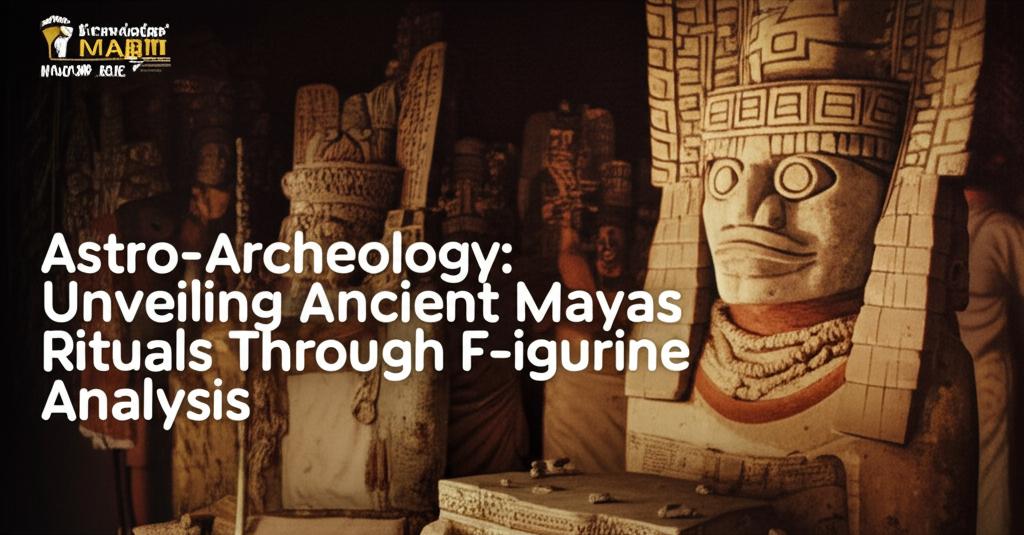The ancient Maya possessed a profound understanding of the cosmos, integrating astronomical knowledge into their rituals, calendars, and architecture. Recent discoveries and ongoing analysis of Mayan artifacts, particularly figurines, continue to shed new light on these intricate practices.
Astronomy as a Foundation of Mayan Life:The Maya meticulously tracked celestial bodies, including the sun, moon, Venus, and various star clusters and constellations. This knowledge was not merely academic; it formed the bedrock of their daily existence. They developed sophisticated calendar systems, such as the 260-day sacred year and a 365-day secular year, which were as precise as those used today. These calendars, along with their understanding of astronomical cycles, guided agricultural practices like planting and harvesting. The Maya could even predict solar eclipses, events that held significant religious meaning and often prompted rituals to honor or appease their deities. The Dresden Codex, one of the few surviving Mayan books, details these astronomical calculations, including cycles of Venus, the sun, and moon, alongside prophecies and information on auspicious days for agriculture.
Ritualistic Significance of Celestial Events:Mayan religious beliefs were deeply intertwined with the cosmos. They believed the movements of celestial bodies reflected the will and actions of their gods. Consequently, astronomical events often dictated an elaborate cycle of rituals and ceremonies conducted by a priestly class. Many Mayan temples and structures, such as the El Caracol observatory at Chichén Itzá and the pyramid of Kukulkan (El Castillo), were precisely aligned with celestial events like solstices, equinoxes, and the zenithal passage of the sun. These alignments often created dramatic visual effects, symbolizing their connection to the cosmos and marking important times of the year. For instance, during the equinoxes, the pyramid at Chichén Itzá casts a shadow resembling a serpent slithering down its side, aligning with a carving of the serpent god Kukulkan.
Figurines as Windows into Rituals:Archaeological discoveries of Mayan figurines offer tangible insights into their ritual practices. These figurines, often made of clay or rubber, likely played various roles in ceremonies.
Recent findings, such as the 2022 discovery of five expressive clay figurines, or "Bolinas-type" puppets, atop a ruined pyramid at the San Isidro archaeological site in El Salvador, suggest their use in public rituals. These 2,400-year-old puppets, depicting male and female figures, some with removable heads, may have been used to commemorate mythical or real events, represent actual personages, or even "bring to life" deceased individuals during ceremonies. Researchers believe these figurines were likely adorned with clothes and wigs to appear more lifelike. The dramatic and changing facial expressions of these puppets, depending on the viewing angle, suggest a conscious design to enhance their role in ritual performances.
Similarly, a 2006 discovery in a royal tomb chamber in northern Guatemala unearthed 23 small ceramic figures, dating back approximately 1,500 years. These figures, arranged in a circle, included depictions of a deceased king with his animal spirit companion, a warrior queen, dancers, scribes, a female shaman, and dwarves with removable helmets apparently ready for ritual boxing to summon rain. The symbolism embedded in these figures, such as the "Ik'" symbol representing breath, wind, and life, further underscores their ritualistic importance.
These figurines were not just static objects; their design often allowed for movement, suggesting they were active participants in ritual dramas. They could have portrayed participants in rituals, witnesses to significant events, or ancestors being invoked. The discovery of similar figurines across Central America also hints at broader cultural connections and shared ritualistic practices throughout the Mesoamerican world.
Ongoing Research and Future Insights:The study of Mayan astro-archeology is a dynamic field. Continued excavation and analysis of sites, artifacts like figurines, and the decipherment of Mayan hieroglyphs are constantly refining our understanding. For example, a recently unearthed altar in Tikal, likely painted by an artisan from Teotihuacan, sheds light on the complex interactions and potential conflicts between these two major civilizations, including the establishment of Teotihuacan ritual spaces within Tikal.
By examining the intersection of Mayan astronomical knowledge and the symbolic representations found in their figurines, researchers can piece together a more vivid picture of their ritual life. These small figures, once animated in sacred ceremonies, offer profound clues into how the ancient Maya perceived their universe and their place within it, a world where the movements of the stars and the actions of the gods were inextricably linked to human existence.

